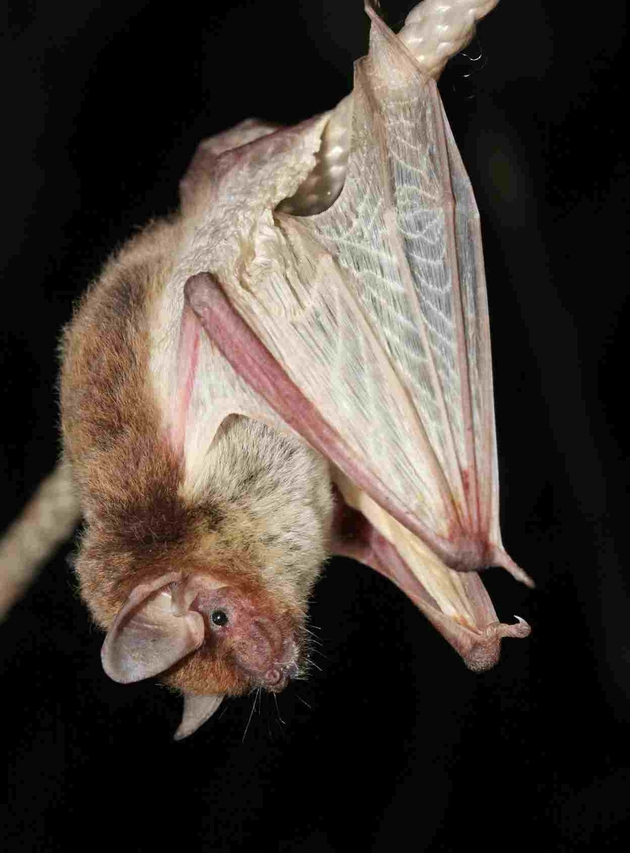Between 2008 and 2012 researcher from Germany, The United States and Swaziland discovered the Isabelline White-winged Serotine during environmental impact assessments in the Simandou and Nimba Mountains of southeastern Guinea. The species occurs in relatively undisturbed rainforest areas that are part of iron ore mining concessions awarded to international mining companies. The biological surveys were designed to assess which rare animal and plant species occur on the mountains and provide data for planning the mining operation as environmentally sustainable as possible. In the Simandou Mountains 35 bat species were found. Species richness estimations showed that up to 45 bat species may occur there. Thus, the Simandou Mountains are one of the regions with the most diverse bat fauna in Africa.
Photo: Isabelline White-winged Serotine bat (Neoromicia isabella) from the Simandou-Mountains in Guinea (Photo: © Jan Decher 2008)
Contact:
Dr. Jan Decher
Zoologisches Forschungsmuseum Alexander Koenig
Adenauerallee 160, D-53113 Bonn, Germany
Phone: +49 228 9122262
E-mail: j.decher [at] zfmk.de
Source:
Decher, J., Hoffmann, A., Schaer, J., Norris, R.W., Kadjo, B., Astrin, J., Monadjem, A., Hutterer, R. 2016. Bat diversity in the Simandou Mountain Range of Guinea, with the description of a new white-winged vespertilionid. Acta Chiropterologica 17(2): 255-282 (for 2015)
doi: http://www.bioone.org/doi/full/10.3161/15081109ACC2015.17.2.003
--------
The Zoological Research Museum Alexander Koenig (ZFMK) and Leibniz Institute for Animal Biodiversity is one of the largest natural-history-research museums in Germany. The museum has earned its reputation as a leader in the documentation, research, and interpretation of biodiversity.
The Leibniz Association is a network of 89 scientifically, legally and economically independent research institutes and scientific service facilities. Leibniz Institutes perform strategic- and thematically-oriented research and offer scientific service of national significance while striving to find scientific solutions for major social challenges.








